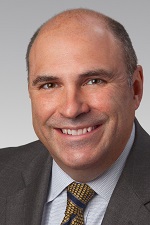 Source: Shutterstock.
Source: Shutterstock.
Credit unions passed another milestone on their path to commercial real estate domination last year, but the remaining distance is still a ways off.
Credit unions had $16.8 billion in multifamily commercial loans on their balance sheets as of Dec. 31, up 27% from a year earlier. Total real estate-backed commercial loans were $88.4 billion, up 16.6% from a year earlier, according to NCUA data.
Recommended For You
That gave credit unions a whopping 1.00% share of the nation's multifamily loans outstanding, up from a 0.85% share at the end of 2019, comparing NCUA data and a quarterly commercial real estate data released Tuesday by the Mortgage Bankers Association.
Credit unions' share of all real estate-backed commercial loans was 2.28% at the end of 2020, up from 2.07% a year earlier.
Of course, banks had the largest share in the MBA study. They ended 2020 with $1.48 trillion in commercial real estate loans, a 4.1% gain and giving them a 38.1% share.
In multifamily loans, banks held $479.8 billion as of Dec. 31, up 4.6% and a giving them a 28.4% share.
That means credit unions are catching up with banks, and if the current growth rates hold, credit unions would surpass banks in multifamily lending in 2037, and in overall commercial real estate in 2044.
Total commercial real estate balances among all lenders grew 5.8% to $3.88 trillion by the end of 2020, while multifamily balances grew 8.2% to $1.69 trillion.
"Despite a fall-off in borrowing and lending during 2020, the total amount of commercial and multifamily mortgage debt outstanding increased during the year," said Jamie Woodwell, MBA's VP of commercial real estate research.
"Continuing the trend of previous quarters, growth in multifamily mortgage debt outpaced other property types, with increases in federally-backed mortgages from Fannie Mae, Freddie Mac, and FHA driving that growth," she said. "Strong appetites from all the major capital sources should keep growth going in 2021."
For credit unions, part of the growth is coming from small and mid-sized credit unions entering or expanding their participation in commercial lending. Some recent examples include:
- Sharonview Federal Credit Union, Indian Land, S.C. ($1.6 billion in assets, 94,527 members) closed this month on the purchase of two bank branches on South Carolina's coast. The branches on Hilton Head Island and nearby Bluffton have some business members, providing a boost to Sharonview as it enters the business market. It plans to expand business services to other markets in the Carolinas later this spring.
- University Credit Union, Los Angeles, ($872.6 million in assets, 41,969 members) created a commercial lending department and hired Scott Miller, with more than 30 years commercial lending experience, as its AVP of member business solutions in late 2019. While much of 2020's energy was redirected to helping members apply for Paycheck Protection Program loans, it still was able to double its commercial real estate portfolio, ending the year with $35.6 million. This year the credit union expects to produce $60 million in commercial loans.
- Truliant Federal Credit Union, Winston-Salem, N.C. ($3.3 billion in assets, 270,834 members) announced this month that it has named Steve Koelsch to the newly created role of SVP of commercial lending. Koelsch has more than 20 years of business-banking experience, as Winston-Salem market president for Memphis-based First Horizon Bank ($83.9 billion in assets).
 Steve Koelsch
Steve Koelsch Anderson Langford, Truliant's chief operations officer, said Koelsch will lead a team of 27 employees to build on the credit union's strength in commercial and U.S. Small Business Administration (SBA) lending.
"Truliant has experienced strong growth in commercial banking with the addition of our new commercial lending offices in the Triad (Greensboro, Winston-Salem, and High Point) and Charlotte. And with the recent addition of SBA lending teams, our future is bright," Langford said.
© Touchpoint Markets, All Rights Reserved. Request academic re-use from www.copyright.com. All other uses, submit a request to [email protected]. For more inforrmation visit Asset & Logo Licensing.







